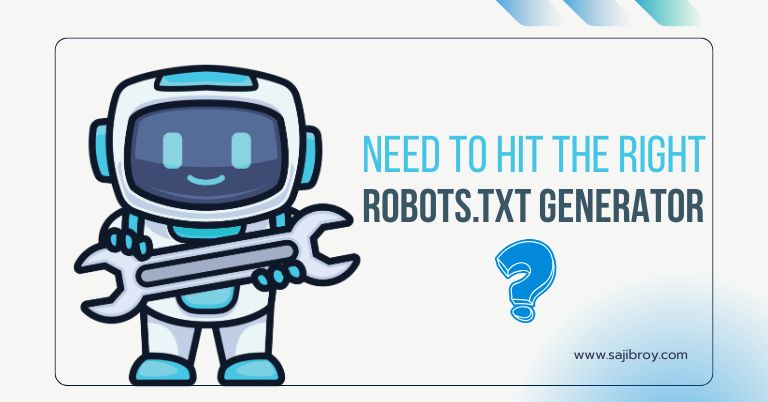Machine learning is a subset of artificial intelligence focused on the development of algorithms that enable computer systems to learn and make decisions without explicit programming. Artificial intelligence, on the other hand, is a broader field that encompasses machine learning and other techniques to create intelligent systems that can simulate human intelligence.
In the modern era, these terms are often used interchangeably, but the key distinction lies in the fact that machine learning is a specific approach within the larger scope of artificial intelligence. As technology advances, both machine learning and artificial intelligence continue to evolve and drive innovation in various industries and sectors.
Let's See the Topic Overview
Overview
Artificial intelligence (ai) and machine learning (ml) are two terms that are often used interchangeably, leading to some confusion. While they are related, it’s important to understand that they are not the same thing. In this section, we will provide an overview of both ai and ml, as well as highlight their relationship and overlap.
Introduction To Machine Learning (Ml)
Machine learning is a subset of artificial intelligence that focuses on developing algorithms and models that allow computers to learn and make predictions or decisions without being explicitly programmed. Here are the key points to know about ml:
- ML algorithms learn from data and iteratively improve their performance.
- Ml models can be trained using labeled data, where the desired outcome is known, or unlabeled data, where the algorithms identify patterns by themselves.
- Ml is widely used in various applications like image recognition, natural language processing, and recommendation systems.
Introduction To Artificial Intelligence (AI)
Artificial intelligence, on the other hand, is a much broader concept that encompasses the simulation of human intelligence in machines. Here’s what you need to know about AI:
- Ai involves developing intelligent machines capable of mimicking human cognitive processes, such as learning, problem-solving, reasoning, and decision-making.
- It aims to create systems that can perform tasks that would typically require human intelligence.
- Ai is not limited to a specific domain and covers various subfields like ML, natural language processing, computer vision, and robotics.
Relationship And Overlap
Ml is a crucial component of ai, and the two terminologies go hand in hand. Here’s how they are related and overlap:
- Ml is a way to achieve ai. It provides the algorithms and techniques that enable machines to learn and make intelligent decisions.
- Ml algorithms are often employed to train ai systems by analyzing large amounts of data and extracting patterns or features.
- Ai incorporates ml techniques to make intelligent decisions based on the data it receives.
- Ml is a subfield of ai, focusing specifically on the aspect of learning from data.
While ai and ml are related, they are distinct concepts. Ml is a subset of ai that involves training computers to learn from data, while ai encompasses the broader goal of creating intelligent machines. Understanding the relationship and overlap between these two terms is crucial in comprehending the advancements and potential applications of ai and ml in various fields.
Understanding Machine Learning
Machine learning (ml) is a fascinating field that has gained significant attention in recent years. It involves the development of algorithms that enable computers to learn and make predictions or decisions without being explicitly programmed. Ml algorithms are designed to analyze and interpret vast amounts of data, allowing them to uncover patterns and insights that can be used to make informed decisions or predictions.
Definition Of Machine Learning
Machine learning can be defined as the process by which computers learn from data and improve their performance over time without being explicitly programmed. It involves using algorithms to analyze data, identify patterns, and make predictions or decisions based on that analysis.
Explanation Of How Ml Algorithms Learn From Data
Ml algorithms learn from data by using statistical techniques to identify patterns and infer relationships. This process involves several key steps:
- Data collection: Ml algorithms require a large and diverse dataset to learn from. The quality and quantity of the data play a crucial role in the accuracy and effectiveness of the ml model.
- Data preprocessing: Before training the ml model, the data often needs to be preprocessed to remove any noise or inconsistencies. This can involve tasks such as data cleaning, normalization, and feature extraction.
- Model training: Once the data is prepared, the ml algorithm is trained using various techniques such as supervised, unsupervised, or reinforcement learning. During training, the algorithm adjusts its internal parameters to minimize errors and improve its predictions or decisions.
- Model evaluation: After training, the ml model is evaluated using an independent dataset to assess its performance and generalization capabilities. This step helps identify any potential issues or areas for improvement.
- Model deployment: Once the ml model is deemed satisfactory, it can be deployed in real-world scenarios to make predictions or assist in decision-making tasks.
Different Types Of Ml Algorithms
There are different types of ml algorithms, each with its own strengths and applications:
- Supervised learning: In supervised learning, the ml algorithm is provided with labeled data, where each example has an associated target or outcome. The algorithm learns to map the input data to the corresponding output by identifying patterns and relationships.
- Unsupervised learning: Unsupervised learning involves training an ml algorithm on unlabeled data. The algorithm learns to discover hidden patterns or structures within the data without any predefined target variables.
- Reinforcement learning: Reinforcement learning is a type of ml where an agent learns to interact with an environment and make decisions to maximize certain rewards. The agent explores different actions and learns from feedback received based on the outcomes of its actions.
Real-Life Examples Of Ml Applications
Machine learning has found applications in various domains and industries, including:
- Recommendation systems: Ml algorithms are used in recommendation systems to analyze user preferences and make personalized recommendations, such as those seen on streaming platforms like netflix and music apps like spotify.
- Image recognition: Ml algorithms can be trained to recognize and classify objects within images. This technology is used in various applications, ranging from autonomous vehicles to medical imaging diagnosis.
- Natural language processing: Ml algorithms are used in natural language processing tasks, such as speech recognition and language translation. Virtual assistants like siri and chatbots utilize ml to understand and respond to human language.
To sum up, machine learning involves the use of algorithms that learn from data to make predictions or decisions. Ml algorithms analyze data, identify patterns, and improve their performance over time. There are different types of ml algorithms, including supervised, unsupervised, and reinforcement learning, each with its own unique applications.
Real-life examples of ML applications include recommendation systems, image recognition, and natural language processing.
Understanding Artificial Intelligence
Artificial intelligence (AI) is a fascinating field that continues to shape various aspects of our lives. From virtual assistants to autonomous vehicles, ai is revolutionizing the way we interact with technology. In this section, we will delve into the definition of artificial intelligence, explore its key components, and provide real-life examples of ai applications.
Additionally, we will differentiate between weak ai and strong ai to gain a comprehensive understanding of this ever-evolving field.
Definition Of Artificial Intelligence
- Artificial intelligence refers to the development of computer systems that can perform tasks that typically require human intelligence.
- It involves the creation of algorithms and models that allow machines to learn from data, reason, and make decisions autonomously.
Explanation Of The Various Components Of Ai
AI comprises several components that enable it to mimic human intelligence. These components include:
- Machine learning:
- Machine learning is a subset of ai and focuses on the development of algorithms that enable machines to learn from data and improve their performance over time.
- It allows machines to recognize patterns, make predictions, and adapt to new information without being explicitly programmed.
- Natural language processing:
- Natural language processing (nlp) involves the interaction between computers and human language.
- It enables machines to understand, interpret, and respond to human language in a manner that is both meaningful and contextually relevant.
- Nlp powers virtual assistants like siri and chatbots, enabling them to engage in natural, human-like conversations.
- Computer vision:
- Computer vision enables machines to interpret and analyze visual information, just like humans.
- It empowers tasks such as facial recognition, object detection, and image classification.
- Applications of computer vision range from surveillance systems to medical image analysis.
- Robotics:
- Robotics combines ai, mechanical engineering, and electronics to create intelligent machines called robots.
- Robots can perform tasks autonomously or with minimal human intervention, making them valuable in various industries such as manufacturing and healthcare.
Real-Life Examples Of Ai Applications
Ai has permeated numerous industries, revolutionizing the way we live and work. Some real-life examples of ai applications include:
- Virtual assistants:
- Virtual assistants like amazon’s alexa, apple’s siri, and google assistant rely on ai to understand natural language queries and perform tasks for users.
- They can provide information, set reminders, play music, and control smart home devices.
- Autonomous vehicles:
- Self-driving cars utilize ai technologies such as computer vision and machine learning to navigate roads, detect obstacles, and make real-time driving decisions.
- They have the potential to enhance transportation safety and efficiency.
- Smart homes:
- Ai-powered smart home systems leverage machine learning and nlp to automate various tasks within the home.
- From adjusting the thermostat based on occupancy patterns to controlling lighting and security systems, ai enhances home comfort and convenience.
Differences Between Weak Ai And Strong Ai
- Weak ai:
- Also known as narrow ai, weak ai refers to ai systems that are designed to perform specific tasks.
- These systems excel in their particular domain but lack generalized intelligence.
- Examples include virtual assistants, image recognition algorithms, and recommendation systems.
- Strong ai:
- Strong ai, or artificial general intelligence (agi), represents ai systems that possess the ability to understand, learn, and apply knowledge across various domains.
- Strong ai aims to replicate human-level intelligence and exhibit capabilities such as reasoning, learning, and problem-solving in any situation.
- Achieving strong ai remains a significant area of ongoing research and development.
Artificial intelligence encompasses a wide array of technologies and applications that continue to shape our digital landscape. With advancements in machine learning, natural language processing, computer vision, and robotics, ai promises exciting possibilities for the future. By understanding the various components of ai and the distinctions between weak and strong ai, we can appreciate the transformative power of this field.
Machine Learning Vs. Artificial Intelligence
Clarifying The Difference Between ML and AI
Machine learning (ml) and artificial intelligence (ai) are two terms that are often used interchangeably, but they actually have distinct meanings. Understanding the difference between ml and ai is important to gain a deeper understanding of the capabilities and applications of these technologies.
Here are the key points to clarify the difference:
- Ml refers to a subset of ai: While ml and ai are related concepts, ml is actually a subset of ai. Ai is a broader field that focuses on creating systems or machines that can perform tasks that would typically require human intelligence. Ml, on the other hand, is a specific approach within the field of ai that uses algorithms to enable machines to learn from data and make predictions or decisions without being explicitly programmed.
- Relationship between ml and ai: Ml can be seen as a component or technique used within ai systems. It is a way to achieve intelligent behavior by allowing computers to learn and improve based on data. The goal of ai is to replicate human-like intelligent behavior, while ml is a way to achieve that goal by allowing machines to learn from data.
Examples Of Ml And Ai Applications To Highlight The Distinction
To better understand the distinction between ml and ai, let’s explore some examples of their applications:
- Ml applications: Ml algorithms are widely used in various domains to make predictions, identify patterns, and automate tasks. Some key examples include:
- Spam email filters: Ml algorithms learn from labeled examples to identify patterns and classify emails as spam or not spam.
- Image recognition: Ml models can be trained with large datasets to recognize and categorize objects, enabling applications such as facial recognition or object detection.
- Personalized recommendations: Ml is used by many online platforms to provide personalized recommendations based on user preferences and behavior.
- Ai applications: Ai systems go beyond ml and aim to exhibit intelligent behavior in a broader sense. Here are a few examples:
- Virtual assistants: Ai-powered virtual assistants, such as siri or alexa, use natural language processing and machine learning techniques to understand and respond to user queries or commands.
- Autonomous vehicles: Ai enables self-driving cars to perceive their environment, make decisions, and navigate safely without human intervention.
- Chatbots: Ai-powered chatbots are designed to simulate human conversation and interact with users to provide customer support or answer inquiries.
While ml is a subset of ai, the two are distinct concepts. Ml focuses on enabling machines to learn from data, while ai aims to create systems that exhibit intelligent behavior. Understanding this difference is crucial in navigating the world of ai and ml and harnessing their potential in various domains.
Key Similarities And Differences
Machine learning (ml) and artificial intelligence (ai) are two terms that are often used interchangeably, but they have distinct differences and similarities. Understanding these differences is crucial in order to grasp the concepts behind ml and ai effectively. In this section, we will explore the key similarities and differences between ml and ai, as well as their practical applications.
Similarities Between Ml And Ai (Both Involve Data, Algorithms, And Problem-Solving):
- Both ml and ai rely on data: Both ml and ai systems require large sets of data to learn from. The data is used to train the algorithms and improve the system’s performance over time.
- Both ml and ai utilize algorithms: Ml and ai algorithms are designed to process and analyze the data in order to make predictions or decisions. These algorithms are the building blocks of ml and ai systems.
- Both ml and ai are focused on problem-solving: Ml and ai are used to solve complex problems by processing large amounts of data and making intelligent decisions or predictions based on that data.
Differences In Scope And Capabilities (Ai Focuses On Simulating Human Intelligence, Ml Focuses On Specific Tasks):
- Ai simulates human intelligence: The primary objective of ai is to simulate human intelligence, aiming to perform tasks that typically require human intelligence, such as speech recognition, natural language processing, and decision-making.
- Ml focuses on specific tasks: Ml, on the other hand, focuses on training models to perform specific tasks, utilizing mathematical algorithms and statistical techniques. Ml models are trained to recognize patterns and make predictions based on the given data.
Practical Applications Of Ml Vs. Ai (Narrow Vs. Broad Applications):
- Ml has narrow applications: Ml techniques are commonly applied in specific domains to solve problems within those domains. For example, ml models may be used in finance to analyze market trends or in healthcare to diagnose diseases.
- Ai has broad applications: Ai, with its focus on simulating human intelligence, has broader applications across various fields. Ai-powered systems can be found in industries such as healthcare, finance, manufacturing, and entertainment, performing tasks like medical diagnosis, autonomous driving, fraud detection, and content generation.
While ml and ai are related, they have distinct differences and similarities. Ml focuses on specific tasks and utilizes data and algorithms to make predictions, while ai aims to simulate human intelligence and has broader applications across different industries. Understanding these nuances is crucial in order to fully comprehend the capabilities and potential of both ml and ai.
Impact On Various Industries
Machine learning (ml) and artificial intelligence (ai) are two terms that are often used interchangeably. However, they are distinct concepts with their own unique applications and capabilities. In this section, we will explore the impact of ml and ai on various industries.
Let’s dive in!
How Ml And Ai Are Transforming Different Industries
Healthcare:
- Ml and ai have revolutionized the healthcare industry by enabling more accurate diagnoses and personalized treatments.
- Medical image analysis algorithms can quickly and accurately detect abnormalities in x-rays, mris, and ct scans, assisting radiologists in providing more efficient and precise diagnoses.
- Ai-powered chatbots offer real-time patient engagement and support, allowing healthcare providers to offer virtual consultations and monitor patients remotely.
Finance:
- Ml and ai have transformed the finance industry by automating processes, reducing errors, and improving decision-making.
- Algorithmic trading systems leverage ml to analyze large volumes of market data, identify patterns, and make predictive trading decisions in real-time.
- Fraud detection algorithms employ ml to analyze transactional patterns and identify suspicious activities, helping financial institutions prevent fraudulent transactions.
Retail:
- Ml and ai technologies have greatly impacted the retail industry by enhancing customer experience and optimizing operations.
- Recommendation systems based on ml algorithms provide personalized product recommendations, leading to higher customer engagement and increased sales.
- Ai-powered chatbots and virtual shopping assistants assist customers in finding products, answering queries, and enhancing the overall shopping experience.
Manufacturing:
- Ml and ai have revolutionized the manufacturing industry by streamlining operations and improving efficiency.
- Predictive maintenance systems utilize ml algorithms to analyze data from sensors and predict equipment failures, enabling proactive maintenance and reducing downtime.
- Ai-powered robots enhance manufacturing processes by automating tasks, improving precision, and increasing productivity.
Examples Of Successful Ml And Ai Adoption In Each Industry
Healthcare:
- Ibm’s watson is being used to analyze patient data and assist in diagnosing and treating cancer.
- Deepmind’s alphafold project has made significant advancements in predicting protein structures, aiding in drug discovery and disease understanding.
Finance:
- Paypal leverages ml algorithms to detect and prevent fraudulent activities, protecting users’ financial transactions.
- Jp morgan’s loxm algorithm utilizes ai to execute large trades while minimizing market impact.
Retail:
- Amazon’s recommendation system analyzes user data to provide personalized product recommendations, leading to increased sales.
- Alibaba’s “magic mirror” technology uses ai to provide virtual dressing room experiences, enhancing the overall shopping experience.
Manufacturing:
- General electric utilizes ml algorithms in its jet engines to analyze data and predict potential maintenance needs, improving overall aircraft efficiency and safety.
- Tesla’s autonomous driving technology employs ai algorithms to enable self-driving capabilities in their vehicles.
Future Potential And Challenges For Ml And Ai In These Industries
Healthcare:
- Future potential: Ml and ai can revolutionize the field of medical research by analyzing vast amounts of patient data to identify new treatments and insights.
- Challenges: Maintaining data privacy and ensuring the reliability and accuracy of ml models remain significant challenges in healthcare.
Finance:
- Future potential: Ml and ai can enable more accurate risk assessment, leading to improved investment strategies and financial planning.
- Challenges: Regulating the use of ml and ai in finance, ensuring transparency, and addressing potential ethical concerns are key challenges to overcome.
Retail:
- Future potential: Ml and ai can enhance customer personalization by integrating online and offline shopping experiences seamlessly.
- Challenges: Striking a balance between personalization and privacy, as well as addressing potential biases in ai algorithms, are critical challenges in the retail industry.
Manufacturing:
- Future potential: Ml and ai can enable fully automated and highly adaptive manufacturing systems, improving productivity and flexibility.
- Challenges: Adapting ai technologies to existing manufacturing processes and ensuring the safety and reliability of ai-powered systems pose significant challenges.
Ml and ai have had a transformative impact across various industries, including healthcare, finance, retail, and manufacturing. The successful adoption of these technologies has led to enhanced decision-making, improved efficiency, and better customer experiences. Despite the immense potential, challenges such as data privacy, regulatory concerns, and algorithmic biases must be carefully addressed to fully unlock the future potential of ml and ai in these industries.
Choosing The Right Approach
When it comes to implementing advanced technologies like machine learning (ml) and artificial intelligence (ai), it’s important to choose the right approach for your business. Both ml and ai offer unique benefits and have their own limitations. Understanding the factors to consider when deciding between the two can help you make an informed decision.
Let’s explore these factors, as well as the benefits and limitations of each approach, to assist you in selecting the most suitable solution for your needs.
Factors To Consider When Deciding Between Ml And Ai Solutions:
- Problem complexity: Ml is generally more suitable for solving specific problems that require pattern recognition and data analysis. On the other hand, ai is designed to mimic human intelligence and is better suited for complex tasks that involve reasoning, problem-solving, and decision-making.
- Data availability: Ml algorithms require a significant amount of high-quality data to train and learn from. If you have access to a large and reliable dataset, ml could be an effective choice. Ai, on the other hand, can utilize both structured and unstructured data, making it more adaptable to varying data availability.
- Resource requirements: Ml models can be computationally expensive to train and may require substantial hardware resources. Ai, on the other hand, often demands more computational power and advanced infrastructure to execute complex cognitive functions. Consider your budget and available resources when making your decision.
- Explainability and interpretability: Ml models, like deep neural networks, can often be considered “black boxes” due to their complex inner workings. If interpretability and explainability are important factors for you, ai approaches that rely on simpler algorithms and rule-based systems may be more suitable.
Benefits And Limitations Of Each Approach:
Machine learning (ml):
- Benefits:
- Ml can handle large volumes of data and make accurate predictions or classifications based on patterns.
- It can automatically adapt and improve its performance over time through continuous learning.
- Ml can identify trends, anomalies, and hidden patterns in data that humans might overlook.
- Limitations:
- Ml models require extensive training and a substantial amount of high-quality data.
- They may suffer from biases present in the training data, leading to biased decision-making.
- Ml approaches are generally limited to specific tasks and may not possess broader cognitive abilities like reasoning or decision-making.
Artificial intelligence (ai):
- Benefits:
- Ai can perform complex tasks that require reasoning, natural language processing, and decision-making.
- It can understand and analyze unstructured data, such as text, images, and audio.
- Ai systems can adapt and learn from the data they receive, continuously improving their performance.
- Limitations:
- Developing ai systems can be resource-intensive, requiring advanced hardware and expertise.
- Explainability and interpretability can be challenging with more complex ai models.
- Ai systems may face ethical and legal concerns related to privacy, data security, and potential job displacement.
Conclusion
Machine learning and artificial intelligence are two closely related concepts yet distinct in their applications. Machine learning focuses on creating algorithms that allow computers to learn and make predictions without explicit programming, while artificial intelligence involves the development of machines or systems that can perform tasks requiring human-like intelligence.
Both fields have significant implications for various industries, including healthcare, finance, and transportation. Machine learning algorithms are used to improve customer experiences, make personalized recommendations, and identify patterns in large datasets, while artificial intelligence enables autonomous vehicles, natural language processing, and virtual assistants.
Understanding the differences between machine learning and artificial intelligence is crucial to harnessing their benefits effectively. By leveraging the power of these technologies, companies can gain valuable insights, automate processes, and enhance decision-making capabilities. As the fields continue to evolve, the possibilities for innovation and advancement are seemingly limitless.
Embracing machine learning and artificial intelligence is key to staying competitive in the fast-paced digital landscape.












